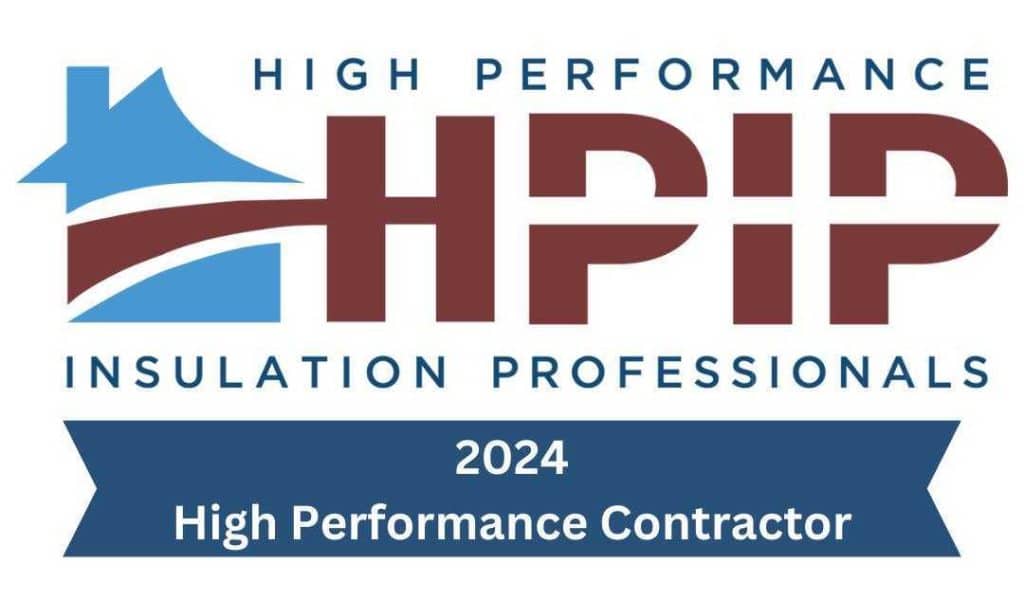Insulation plays a crucial role in maintaining indoor comfort, reducing energy costs, and ensuring your home remains efficient throughout the year. Over time, insulation can degrade, lose effectiveness, or even become a health hazard. Recognizing that many homes lose energy due to gaps, cracks, and leaks in their structure. These small openings allow air to escape, making heating and cooling systems work harder to maintain comfortable indoor temperatures. This results in higher energy bills and a less efficient home environment.
Air leaks are common around windows, doors, attics, basements, and even electrical outlets. While insulation helps retain heat, without proper air sealing, conditioned air continues to escape. Addressing these issues reduces energy consumption, improves indoor comfort, and lowers utility costs.
How Air Sealing Works
Air sealing involves identifying and closing gaps that allow unwanted airflow. Professionals use materials like caulk, weatherstripping, and expanding foam to seal cracks and openings. When done effectively, this process prevents warm or cool air from leaking out and unconditioned air from entering.
The process begins with an energy audit, which includes a blower door test to locate leaks. Once identified, sealing materials are applied strategically to create a more airtight barrier. This improves HVAC efficiency, reduces temperature fluctuations, and enhances overall home comfort.
Common Areas of Air Leakage
Attics
Attics are one of the biggest sources of air leaks. Openings around recessed lighting, vents, and attic hatches allow heat to escape in winter and enter in summer. Sealing these areas prevents unwanted airflow and reduces strain on heating and cooling systems.
Windows and Doors
Gaps around window frames and doorways let air seep in and out. Applying weatherstripping and caulking around these areas improves insulation and stops drafts.
Basements and Crawl Spaces
Cracks in basement walls and gaps around foundation openings contribute to energy loss. Sealing these areas helps maintain a consistent indoor climate and prevents moisture issues.
Electrical Outlets and Plumbing Penetrations
Small openings around outlets, switches, and plumbing pipes allow air transfer between conditioned and unconditioned spaces. Foam gaskets and sealants help close these gaps, reducing energy waste.
Benefits of Air Sealing
Lower Energy Bills
By reducing air leaks, heating and cooling systems operate more efficiently, leading to lower utility costs. A well-sealed home requires less energy to maintain comfortable temperatures year-round.
Improved Indoor Comfort
Air sealing eliminates drafts and temperature inconsistencies, creating a more stable and comfortable indoor environment.
Better Indoor Air Quality
Sealing air leaks prevents outdoor pollutants, allergens, and moisture from entering the home, improving air quality and reducing health risks.
Reduced Carbon Footprint
A more energy-efficient home lowers overall energy consumption, decreasing greenhouse gas emissions and promoting environmental sustainability.
Professional vs. DIY Air Sealing
When to Do It Yourself
Some air sealing tasks, like applying weatherstripping or caulking small gaps, can be done without professional help. These simple fixes can significantly reduce air leakage in common problem areas.
When to Call a Professional
Larger or less accessible leaks, such as those in attics, basements, or ductwork, require professional expertise. A trained technician can conduct a thorough energy audit, identify hidden leaks, and apply the most effective sealing solutions.
Making Your Home More Energy Efficient
Air sealing is just one step in improving home efficiency. Combining it with proper insulation enhances overall performance. Upgrading HVAC systems, installing energy-efficient windows, and using smart thermostats further optimize energy use.
Take Action Today
If you suspect your home is losing energy, a professional air sealing assessment can identify problem areas and recommend the best solutions. Reducing energy waste not only saves money but also increases the comfort and longevity of your home.
Makeover Insulation provides expert air sealing services to help homeowners improve efficiency and lower utility costs. Contact us at (470) 664-5300 or email [email protected] for more information.
Frequently Asked Questions
How much does air sealing cost?
The cost depends on the size of the home and the extent of the air leaks. A professional assessment provides an accurate estimate based on specific needs.
How long does air sealing last?
With proper application, air sealing materials can last for many years. Periodic inspections ensure continued effectiveness.
Will air sealing make my home too airtight?
A well-sealed home still allows for controlled ventilation to maintain indoor air quality. Professional air sealing ensures a balance between efficiency and airflow.
Can I do air sealing myself?
Some air sealing tasks, like caulking and weatherstripping, are simple DIY projects. However, a professional energy audit helps identify hidden leaks that require expert sealing solutions.
How does air sealing affect HVAC performance?
A properly sealed home reduces the workload on heating and cooling systems, extending their lifespan and improving efficiency.
What’s the difference between air sealing and insulation?
Insulation slows heat transfer, while air sealing prevents air movement. Both work together to create a more energy-efficient home.
Will air sealing reduce outside noise?
Sealing gaps and cracks can help reduce noise infiltration, making your home quieter and more comfortable.
How do I know if my home needs air sealing?
Signs include high energy bills, drafts, uneven temperatures, and excessive dust. An energy audit confirms areas that need sealing.
Is air sealing worth the investment?
Yes, air sealing provides long-term savings on energy bills and enhances home comfort, making it a worthwhile investment.
For expert air sealing services, contact Makeover Insulation at (470) 664-5300 or [email protected] today.




